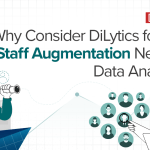Data analytics in Human Resource (HR) function is not a new concept. However, too often, HR focuses on obtaining insights about what has happened in the past and does not spend enough time and effort on gaining insights about what might happen in the future.
In doing so, HR loses an opportunity to bring forth strategic insights to the business-something that will enable HR to change its perception from being a mere support function to one that brings significant strategic value and makes a substantial impact on a company’s business performance.
Technological advancements, such as predictive analytics, have brought reliable solutions that provide these insights about future events based on what has happened in the past.
Predictive analytics is defined as “the application of data, statistical modeling, and machine learning methods on historical data with the objective of identifying the likelihood of future outcomes”.
How Does Predictive Analytics Work?
At a simplistic level, a predictive analytics solution comprises of the following steps:
- Collect data: This involves collecting data from multiple sources. This data becomes the underlying basis on which predictions are made.
- Pre-process data: This involves processing (example cleaning, formatting, combining, sampling) the data obtained in the above step so that it can be used in a ‘predictive model’.
- Identify predictive model: This involves choosing a predictive model (such as correlation matrix, decision tree, neural network, random forest) which will be applied to the data for analysis. These predictive models are developed to extract meaningful insights from data.
- Train the predictive model: This involves training the predictive model so that it can make the right predictions. This means feeding the model with data, checking the outcomes produced and fine tuning the model. Based on this, one may make predictions for future data.
- Provide insights to users: This involves creating a user interface using techniques like data visualization and data storytelling to make predictive insights comprehensible to users.
- Act on insights: This involves utilizing insights about future events to make sound business decisions and optimize business processes.
- Refine the predictive model: This involves retraining the predictive model on an ongoing basis to keep improving the prediction precision.
Top Use Cases of Predictive Analytics in HR
Since employees are the most valuable resource in a company, it makes considerable sense to leverage predictive analytics in the HR function to enable it to make sound decisions ahead of time based on the wisdom that predictive analytics provides. There are several use cases where predictive analytics can be adopted in HR. Some of these are discussed below:
Use Case 1: Prevent Attrition
This is one of the top use cases of predictive analytics in HR. Employee attrition can cost companies around 150% of an employee’s annual salary due to the time and money spent on hiring a replacement. Research also shows that 75% of the causes of turnover are preventable.
The HR function can use predictive analytics to predict the likelihood of employee attrition based on factors such as employee engagement survey results, employee growth, salary, promotion, and others. HR can share these insights with managers to improve retention strategies, provide training to managers, ensure personalized engagement, and more. This can prove particularly beneficial in the case of high-potential employees, as they are always difficult to replace.
Some well-known companies that have used predictive analytics to keep their employees from leaving are:
- Hewlett Packard (HP) discovered that its employees were leaving the company at an alarming rate. To solve this problem, HP developed a predictive analytics program called “Project Insight.” This program used a combination of statistical modeling and text mining techniques to predict future outcomes, including telling which employees will quit within the next six months. Over the course of two years, the program helped HP cut the rate of employee turnover from 20% to less than 10%.
- Credit Suisse which utilized predictive analytics to predict not only which employee might quit the company, but also the reason why the employee might quit. It then provided this information anonymously to managers so that they could reduce turnover risk factors and retain their people better. The program saved Credit Suisse approximately USD 70 Million in a year.
- Experian built a predictive model that included 200 attributes, including team size and structure, supervisor performance, and length of commute. With this, it was able to predict flight risk triggers. For example, it identified that when someone moved further away from the office, this would increase the immediate flight risk. The model was rolled out in multiple regions and these insights resulted in a drop in attrition of 2-3% with an estimated saving of USD 8-10 Million in a year.
- Xerox Corporation which leveraged predictive analytics to reduce attrition by collecting data from personality assessment tests of different employees, based on this, it developed personality trait indicators of good employees. It used these indicators/scores for hiring candidates. This helped Xerox in reducing attrition rate by 20% within six months.
Use Case 2: Recruit Top Performing Hires
Another significant use case of predictive analytics is in the hiring process, where it can be leveraged by HR in a variety of ways, such as:
- Create job advertisements that precisely target the desired talent pool using factors such as occupation, industry, and location, along with the company’s requirements.
- Identify the best medium for reaching the target audience.
- Present list of candidates most likely to be worth taking to the next stage in the recruitment funnel.
- Make the process of resume ranking, shortlisting, and pre-screening candidates fast and accurate by analyzing various factors such as education, experience and engagement. This data-driven approach not only helps in saving time and money but also proves crucial in reducing human bias.
- Predict the characteristics and profile of a candidate who would make a successful employee. HR can use predictive analytics to understand the characteristics that correlate with a strong job fit. From educational background to years of experience, HR can put together a data-driven ideal candidate profile to zero-in on prospects that possess desired skills, traits, and competencies. This can enable HR to elevate the quality of their talent pool across the board while saving countless hours on interacting with unfit candidates.
A few notable examples of companies which have harnessed the power of predictive analytics in recruiting top performing hires are:
- Google created a predictive analytics program called ‘Google Prediction Engine’ which analyzes job history, education, skills, and personality traits to determine whether applicants will be successful at Google. Based on this information, the system generates predictions about whether an applicant will become a great employee. If the forecast is favorable, Google then offers the candidate a position. However, if the prediction is pessimistic, Google does not provide the person with a job. This program has been very effective at reducing the number of unsuccessful applications at Google.
- AMC Theatres used workforce analytics and employee profiling to identify the core traits of high-performing customer-service representatives and re-calibrated their hiring process to predict successful candidates. This resulted in reduced turnover rates, higher employee engagement, and better client satisfaction.
Use Case 3: Reduce Absenteeism
Another beneficial example of predictive analytics is in predicting employee absenteeism. With predictive analytics, HR can generate multiple hypotheses and validate them to identify the potential reasons for absenteeism. These insights can be shared with direct managers as well as be used to improvise various policies. This can enable HR to optimize their resources and employee performance and save unnecessary expenditure. A few notable examples of companies which have harnessed the power of predictive analytics in reducing absenteeism are:
- E.ON which used predictive analytics to reduce employee absenteeism. Absenteeism in this German energy company had risen above the benchmark, so, the company used predictive analytics to formulate 55 hypotheses to uncover the reason behind absenteeism, out of which they tested 21 and validated 11. The result: The company discovered that a lack of a long holiday in the year increased absenteeism and shared this insight with managers to improve paid time off policies.
While the above cited use cases of predictive analytics in HR are the top ones, there are a few others that are significant too. These are listed below:
Use Case 4: Lower Labor Costs
Predictive analytics can anticipate a demand spike in the future that could lead to costly overtime hours. Based on this insight, HR can take measures to prevent the occurrence of this event by adjusting employee schedules preemptively.
Use Case 5: Forecast Potential Skill Dearth
HR can use predictive analytics to forecast potential skill dearth across the company. They can use current employee data such as education, skills, experience, and other factors to predict which employee will be best suited to fill the new skill gap. Through this, HR can utilize current employees to upskill, saving recruitment costs and improving workforce utilization.
Use Case 6: Designing Impactful Learning Experiences
Employee learning habits can be analyzed to understand what aids knowledge absorption and retention. Based on this, predictive analytics can help HR in knowing which learning experience is most likely to hit the “sweet spot” with a specific type of learner.
Conclusion
With companies sitting on a mine of employee data and easy-to-use-software becoming more affordable and accessible than ever before, predictive analytics can churn out extremely accurate insights based on employee data. HR can leverage these insights to make data-driven, evidence-based predictions ahead of time.
This will enable HR to gain recognition as a leader for all people-related matters in the company. HR will play a bigger role in strategic decisions and become a key factor in a company’s efforts to grow and be more productive.
To know more on how predictive analytics can help HR, reach out to us at [email protected]





